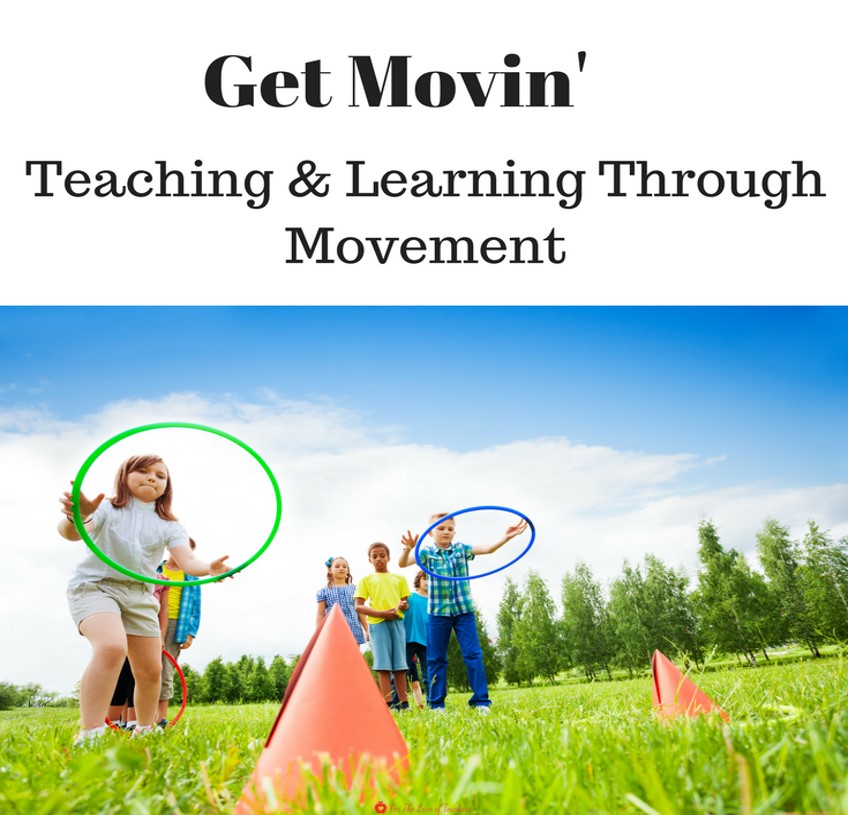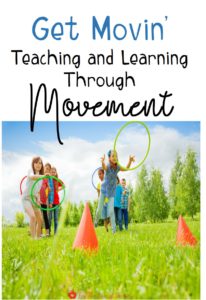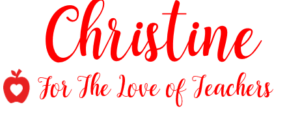
It’s during those 3 months at the beginning of the new year, right after the holidays, that I see a change in my students. The holiday thrill and magic is over and there is a lull in excitement and spirit. They look tired and grey. The long, dark, cold days are bringing them down. They have nothing to look forward to except for the possibility of some snow days. A glimmer of hope for a day or two off for the chance to go sledding anxiously sits at the back of their minds. Sad to say it but I feel it too. The dark months I call it: January, February, and March. It’s the time of year when we feel a little less motivated and a little wearier until that extra hour from daylight savings time shows us that there is a light at the end of the tunnel and spring break will arrive soon.
So how do you get out of this seasonal rut? How do you energize and ignite the learning in your students? How do you bring back their spirit for learning? Two words- get moving!
Let’s face it, school days are completely jammed packed. I am conditioned to teach from one subject to the next in an elementary classroom. It seems impossible to interrupt the flow of instruction with brain breaks and movement activities. There is just no time for it. I can barely get in the content, never mind stopping a few minutes for something, “fun.” However, once I tried a brain break or movement activity, I finally understood the value in it. I heard laughter and saw my students’ spirits rise. I witnessed my students coming back to life and so was I. This was all the result of a 2-minute break. ‘I can spare two minutes,’ I thought and began using brain breaks and other movement activities to my advantage.
Why Does Movement Work?
Studies show that there are 10 critical reasons the purpose of movement should be used to enhance learning.
Movement:
• Makes the learning process more efficient
• Provides a break from learning and refocuses attention
• Allows for implicit learning
• Improves brain function so new brain cells grow and thrive
• Meets basic needs- survival, belonging, power, freedom, and FUN
• Improves the learning state
• Differentiates instruction
• Engages the senses
• Reduces stress
• Increases circulation
• Enhances episodic learning and memory
(Lengel, T & Kuczala, M (2010): The Kinesthetic Classroom Teaching and Learning Through Movement)
Movement Adds Value
Being a Responsive Classroom teacher, I found value in adding fun, movement activities in my morning meeting activity to build classroom community. We started off the year with an activity called Name Pass to learn names and the importance of student presence.
How to Play Name Pass:
• Students gather around the morning meeting rug in a tight circle.
• The teacher begins the game by handing the ball to one student in the circle, saying the student’s name aloud.
• That student passes the ball to their right, saying the student’s name aloud.
• Everyone in the circle will do the same, passing the ball to the right while saying their classmate’s name. Play should continue one or two rounds, with the goal of teaching and learning each other’s names.
• If the students hear the chime, the ball should quickly switch directions, now players say the student’s name aloud to their left as they pass the ball around the circle. The goal is to get rid of the ball as soon as you get it.
• The teacher could add in more balls to the game. All balls will be traveling at the same time. The goal is to NOT to be stuck with two or more balls at the same time. If a player is caught with two or more balls, he or she is out of the game. The teacher could invite students back into the game after so many rounds, having students join back into the game in a different spot in the circle so students could learn many names.
Using Movement to Review Content
Adding movement activities also can be used to review academic content. Want your students to review or study content before a test? Add some activities like this one to your classroom.
Hot Potato Review
• Students gather in a tight circle on the carpet (or in smaller groups around the room if you prefer).
• Give the group(s) a ball.
• Play music while students pass the ball around the circle to the person to the right.
• When the music stops, all students freeze.
• The person who has the ball has to answer a review question. The student has a lifeline to their right and their left, which means the student can ask for help if he does not know the answer to the question.
• If the response is correct, the student earns a point for the team.
• The game will continue when the music is turned back on.
• Keep track of points the team(s) earned. If playing with small groups, the team with the most points win.
Get Movin’ Outside
Feeling cabin fever? Stuck in the classroom for too many days or is your classroom too small for movement activities? Well, get outside. Many teachers take the opportunity to teach outdoors when the weather permits. Getting some vitamin E and some fresh air helps students learn. Bring sidewalk chalk outdoors for kids to make hopscotch grids to practice their math facts. Bring out jump ropes to skip count. Play games that do it all: builds and teaches classroom community, social skills, and reviews content.
Try a Partner Walk and Talk:
• Allow students to choose a partner.
• Allow partners to take a walk around the walking track or playground while discussing and reviewing content before an upcoming test.
• Partners could simply quiz each other or share something that was taught in a previous lesson.
Partner Ball Pass Review:
• Allow students to choose a partner.
• Give each pair of students a ball and tell them to stand back to back. (or students could bounce the ball back and forth)
• Students pass the ball back and forth as they continually repeat bits of content (ex. evaporation, condensation, precipitation, and collection-the water cycle).
• After a minute, students find a new partner.
• When a student gets back to back with a new partner, they begin passing the ball while repeating the same information.
• Students then find another partner and the activity continues for a few more minutes.
(This activity could be used to practice spelling words, review vocabulary, practice math facts, etc.)
Movement and Behavior
Teaching and learning through movement can help your most challenging students. All students want to have fun while learning but before doing any movement activity be sure to set high expectations.
• Define clear expectations and logical consequences
• Use basic cues for getting students’ attention, like a chime or whistle
• Provide time limits
• Designate a physical space in the classroom for movement activities
• Be firm- do not allow students to participate if they are being unsafe, off-task or disruptive. When a student loses control during an activity, use simple and consistent language, “Jack, you are out, take a break.”
• Be present- watch all behaviors during activities
You’ll find that when a student is “out” of the movement activity because of poor behavior, the student will fix their behavior rather quickly to become part of the “fun” again. No child wants to be left out of something fun. Most times the child’s disruptive behavior improves when incorporating more movement activities. Also, their grades and overall confidence improves when they become more accepted by the group. Poor behavior decreases, grades and confidence improves resulting in all parties to be happier: teacher, student, and parent. It’s a win-win for all!
More fun ways to teach and learn through movement:
• Add music to just about anything. Kids love music and love to dance- try a freeze dance and turn in into all-out dance-off on some kind of academic content.
• Use technology- Gonoodle offers lots of brain breaks and movement activities that are so much fun and amusing to watch at the same time.
• Incorporate a challenge- use timers and keep score to motivate students to do their best- they love a good challenge at any age and the results are amazing!
So try adding some movement and fun to your classroom to make your teaching and student learning more effective and most of all FUN! You and your kids will be happier, healthier and smarter.
Know of any great movement activities and/or brain breaks that are a big hit in your classroom? Visit the Forums, and then to The Kinesthetic Classroom to share your thoughts, ideas, and suggestions.
Be sure to visit the Shop for classroom management resources and don’t forget to join the email list to receive the latest and greatest updates, plus monthly freebies!!
If you like it, then pin it!



Christine Weis is a passionate educator, classroom management coach, wife, and mom of two busy boys. She enjoys teaching, writing, and creating resources for teachers.




Body language is super important when having a convo as well as teaching others. Using movement is sooo important.
It sure is! Thanks for reading and for leaving a comment!
Christine at For The Love of Teachers
Some of these ideas are great, especially love the name pass game, perfect for the start of the year so kids can learn their classmates names.
Thank you for reading! I love Name Pass too! Thanks for your comment!
Christine at For The Love of Teachers
I couldn’t agree more! Great post!!
Thanks Abby! Appreciate you reading this post and commenting!
Christine at For The Love of Teachers
Being a drama teacher I find movement a great tool for learning. My students have used memory and movement techniques to help them revise other subjects. The more a pupil is active, the more they engage and learn
I completely agree! Movement definitely gets kids learning! That’s awesome how you as a drama teacher encourages movement to increase learning!
Christine at For The Love of Teachers